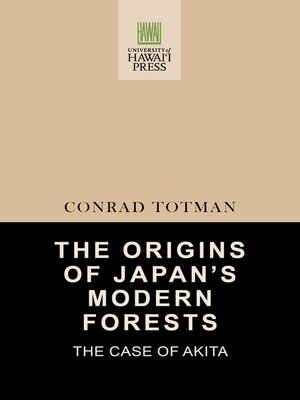The Origins of Japan's Modern Forests
ebook ∣ The Case of Akita · Asian Studies at Hawaii
By Conrad Totman

Sign up to save your library
With an OverDrive account, you can save your favorite libraries for at-a-glance information about availability. Find out more about OverDrive accounts.
Find this title in Libby, the library reading app by OverDrive.



Search for a digital library with this title
Title found at these libraries:
| Library Name | Distance |
|---|---|
| Loading... |
The woodlands of Japan vary substantially from north to south, and the patterns of their use and abuse differed from area to area during the Edo, or early modern, period (1600–1868). Nevertheless, the basic characteristics and rhythms of forest history were common to all of Japan (except the sparsely populated northern island of Hokkaidō). It is possible, therefore, to illuminate the general experience by scrutinizing a section of the whole.
The section selected here is Akita, a prefecture of northern Japan whose forests are among the nation's most famous. Three considerations make this choice attractive. The topic has clearly delineated boundaries, largely because the Akita region was a single coherent political unit during the Edo period; the documentation on the early modern forest situation there is extensive and accessible; finally, and as a consequence of the second factor, Japanese scholars have already published excellent studies on key aspects of Akita forestry. These factors have made this a relatively convenient area to examine and discuss in the short compass of this study.







